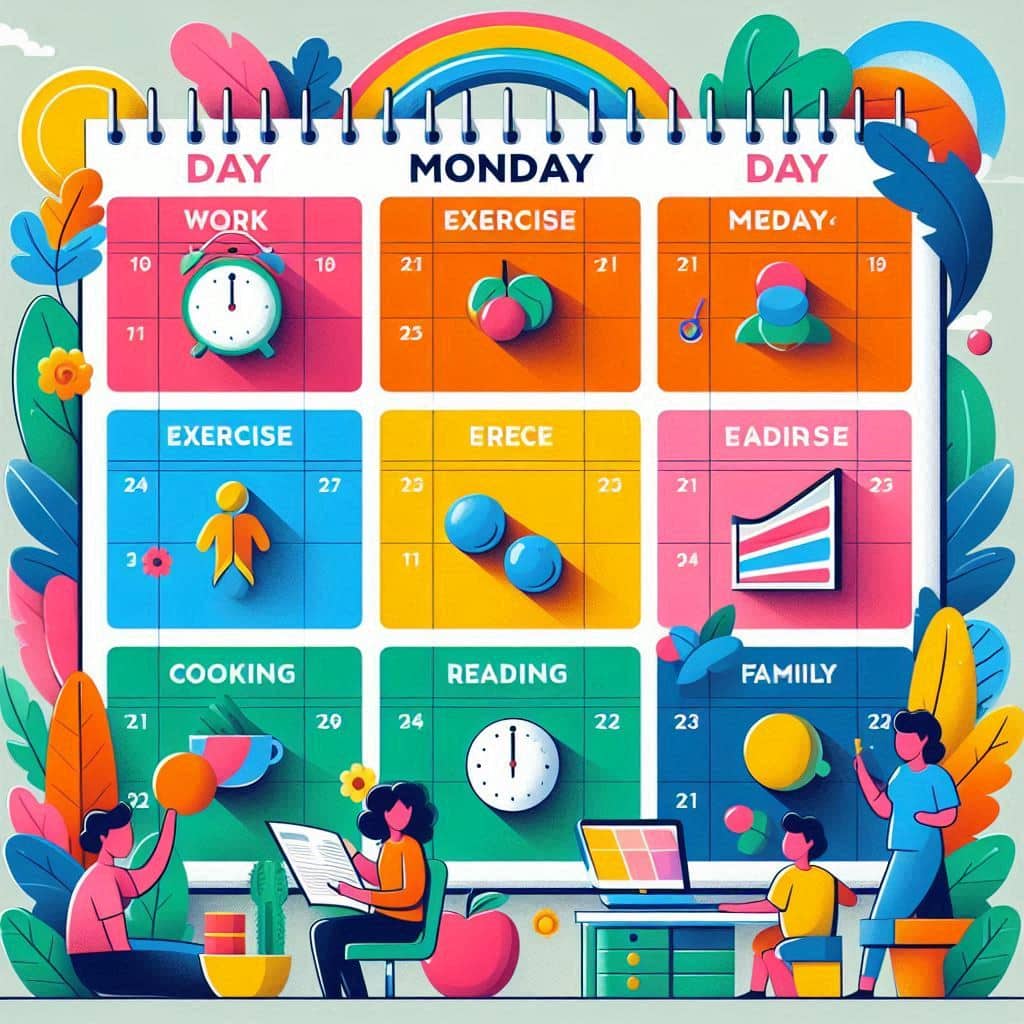Creating a daily schedule can seem like a mundane task, but when done right, it becomes a powerful tool to transform your productivity and success. In this guide, we’ll explore practical tips and strategies to design a daily schedule that maximizes your efficiency, balances your life, and helps you achieve your goals. Whether you’re looking for a simple daily routine or a complex, tailored plan, we’ve got you covered. Let’s dive in!

Understanding the Importance of a Daily Schedule
A daily schedule isn’t just about planning your day; it’s about creating a framework for success. When you have a structured plan, you set yourself up for productivity and peace of mind. Without a plan, you might find yourself overwhelmed, distracted, or missing out on important tasks.
What is a Daily Schedule?
A daily schedule is a detailed plan that outlines how you will spend your time each day. It helps you allocate time for work, personal tasks, and relaxation. Think of it as your daily roadmap, guiding you through your day and ensuring you stay on track.
Why You Need a Well-Crafted Daily Schedule
Having a well-crafted daily schedule can make all the difference. It can:
- Increase Productivity: By organizing your tasks, you’ll find it easier to focus and get more done.
- Reduce Stress: Knowing what to expect each day reduces anxiety and helps you manage your time better.
- Improve Time Management: A clear schedule helps you prioritize tasks and allocate time more effectively.
- Enhance Work-Life Balance: Balancing work and personal life becomes easier with a well-planned schedule.
Steps to Create an Effective Daily Schedule
Creating an effective daily schedule doesn’t have to be complicated. Here’s a step-by-step guide to help you craft a plan that works for you.
Step 1: Identify Your Priorities
Start by listing your daily priorities. What tasks are most important to you? This could include work projects, personal goals, or routine activities. Identifying your priorities helps you allocate time effectively.
Step 2: Set Realistic Goals
Your daily schedule should include goals that are achievable. Setting realistic goals ensures that you don’t overburden yourself. Break larger goals into smaller, manageable tasks.
Step 3: Allocate Time Blocks
Divide your day into time blocks for different activities. For instance, you might have blocks for work, exercise, meals, and relaxation. This approach helps you stay focused and makes it easier to track your progress.
Step 4: Build in Flexibility
While having a structured schedule is important, flexibility is key. Life is unpredictable, and having some buffer time can help you adapt to unexpected changes. Allow room for adjustments as needed.
Step 5: Review and Adjust
At the end of each day or week, review your schedule. What worked well? What didn’t? Adjust your schedule based on your observations to continually improve its effectiveness.
Daily Schedule Samples
Looking at daily schedule samples can provide inspiration for creating your own. Here are a few examples to consider:
Sample 1: The Productive Daily Schedule
- 6:00 AM: Wake up and exercise
- 7:00 AM: Breakfast and review daily goals
- 8:00 AM – 12:00 PM: Focused work time
- 12:00 PM: Lunch break
- 1:00 PM – 3:00 PM: Meetings and collaborative work
- 3:00 PM – 5:00 PM: Finish up tasks and plan for the next day
- 5:00 PM: End of work and relaxation time
- 7:00 PM: Dinner and personal time
- 9:00 PM: Review day and wind down
- 10:00 PM: Bedtime
Sample 2: The Balanced Daily Schedule
- 7:00 AM: Wake up and morning routine
- 8:00 AM: Breakfast and plan the day
- 9:00 AM – 12:00 PM: Work or study session
- 12:00 PM: Lunch and short break
- 1:00 PM – 3:00 PM: Work or study session
- 3:00 PM – 4:00 PM: Short exercise or walk
- 4:00 PM – 6:00 PM: Finish work or study
- 6:00 PM: Family time or hobbies
- 7:00 PM: Dinner
- 8:00 PM: Relax and unwind
- 10:00 PM: Bedtime
Tips for Maintaining a Productive Daily Schedule
Keeping up with your daily schedule requires commitment and a few helpful strategies:
- Use Technology: Utilize scheduling apps or tools to keep track of your tasks and reminders.
- Stay Organized: Keep your workspace tidy to avoid distractions and enhance productivity.
- Prioritize Self-Care: Include time for rest, exercise, and relaxation to maintain a balanced life.
- Be Consistent: Try to stick to your schedule as closely as possible to build routine and habit.
- Adjust as Needed: Be flexible and make adjustments based on your changing needs and priorities.
Conclusion
Crafting a daily schedule is an essential step towards achieving productivity and maintaining a balanced life. By setting clear goals, allocating time wisely, and staying flexible, you can create a schedule that supports your success. Remember, the best daily schedule is one that works for you, aligns with your priorities, and adapts to your lifestyle.
Start building your daily schedule today and watch how it transforms your productivity and overall well-being!